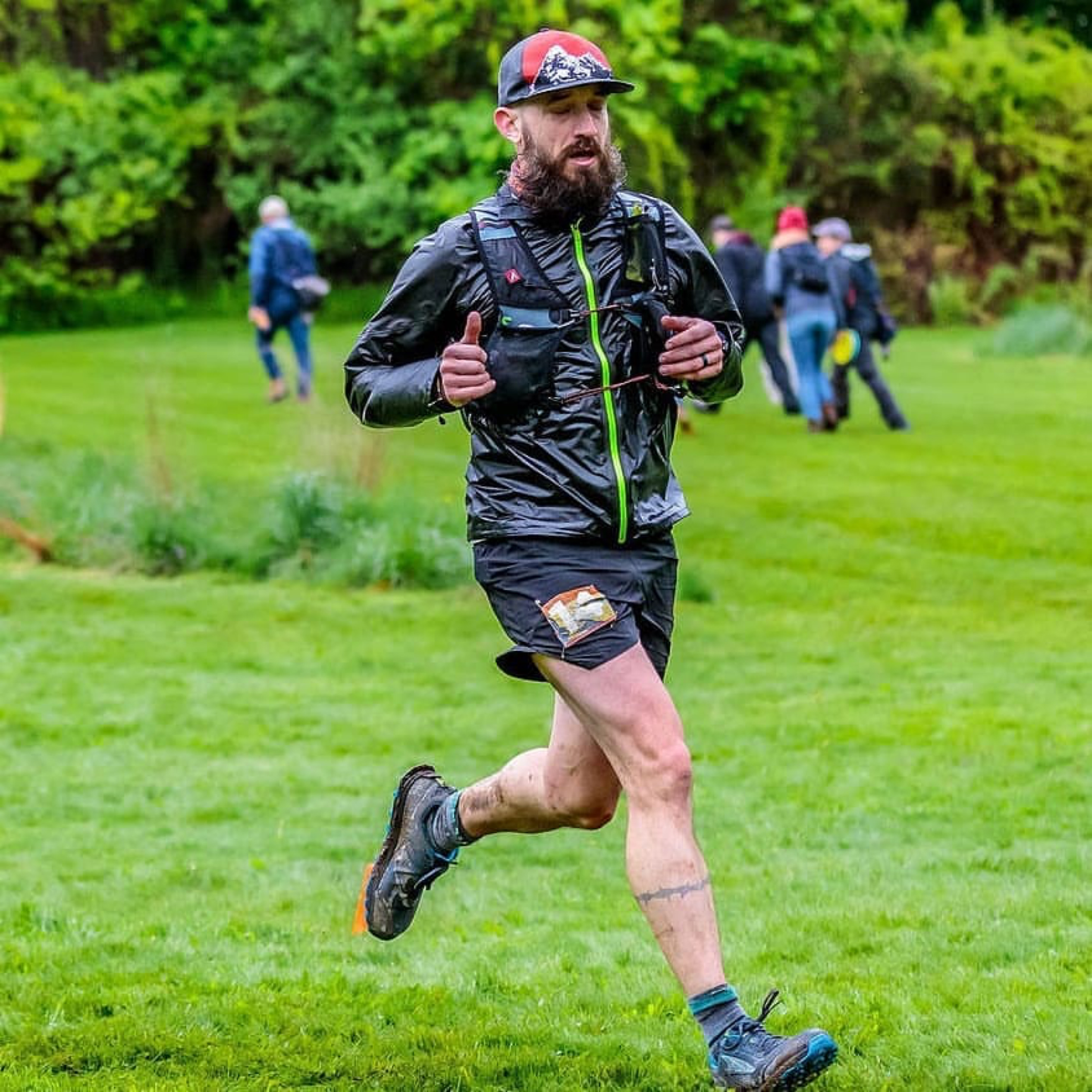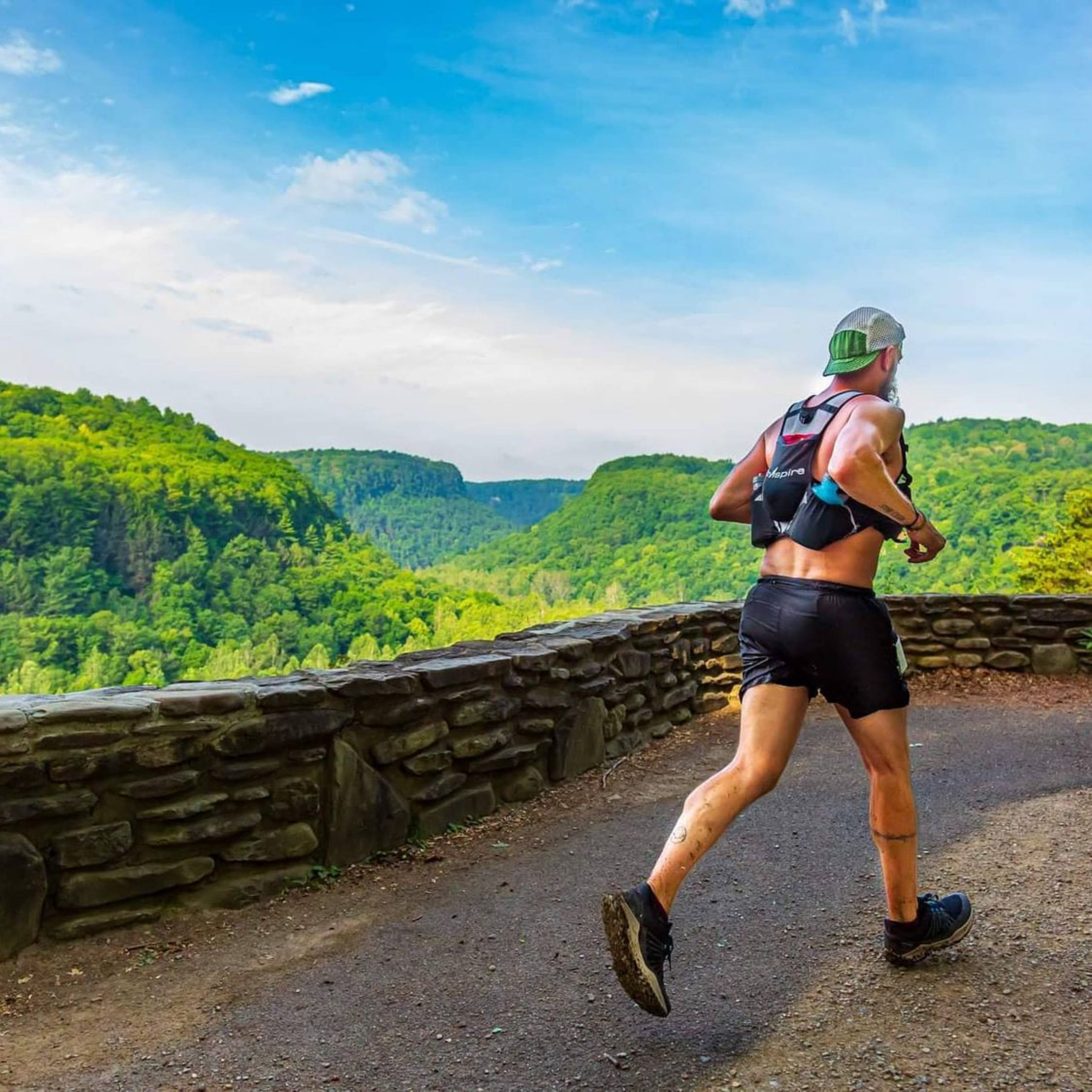Ready For Your First Ultra?
What happens when you combine an outdoor adventurer with a competitive endurance sports athlete? You get an ultra runner.

A beautiful outdoor adventure course, coupled with the challenge and competition of an endurance sports race, yields ultra running perfection. Few know this better than two of the sports’ original facilitators: Dann LG from Redpoint Productions and Vinny Cappadora from Happily Running. Over the last 10 years, Dann LG and Cappadora have participated in dozens of ultra races and directed hundreds of events.
The definition of an ultra race is any footrace over the distance of a traditional marathon (26.2 miles/42 kms). Some standard distances include:
- 50k: at four miles/eight kilometers over the standard marathon, this is often considered the “5k” of ultras. Most ultra events will cover this 50k option as part of a larger variety of distances.
- 80.47k/50 miles: For the true die-hards like Andrew Glaze, 50 miles/80 kilometers is where real ultra running begins. Nearly double the distance of the marathon, this event requires you to have a much different race strategy.
- 100k/62.8 miles: This distance starts to push the upper bounds of your endurance limits. With average finishing times between 10 and 15 hours, adequate fueling and hydration are essential.
- 100 miles: The big kahuna. This distance has quickly become the ‘marathon of ultras.’ The majority of runners will compete for over 24 hours with some up to two days. These events require meticulous planning and experience. (Completing shorter ultra distances first is highly recommended.)
- 100+ miles: For those looking to really push the limits, there are a number of races that have become mainstays in the sport at well above 100 miles. One of the most noteworthy is Cocodona 250. Held in Arizona, this race covers over 250 miles from Prescott to Flagstaff and offers over 9,000 feet of elevation gain. Races like this are extremely complex, requiring a strategy and supplies that cover up to a week of trekking.

In addition to the varying distances, there are also some differences in the structures of these races.
- Timed races: racers must cover as much distance as possible in a fixed period of time. One of the most popular is the 24 hour race, set on a shorter course loop. Racers complete continuous loops (generally one to five miles) of the course until time runs out. With the repeated smaller loop, these races have the benefit of a contained structure, servicing runners with one or two well staffed/stocked aid stations.
- Point to point: here racers run a single direction course, which adds an additional dynamic to the race plan: navigation. With aid stations few and far between (as far as 30+ miles apart) and changing weather patterns, racers must take care to plan out their supplies and gear accordingly.
- Stage races/multi-day races: these are either broken down into daily events of a specified distance or time, or staged so that runners can cover as much distance as they want, at their own discretion, over a set course or over a set number of days.
Ultra racing vs. marathon running
“Ultra running is 80 percent party and 20 percent race. The vibe at these races are more about having a good time vs. winning a race,” said Cappadora. It’s not uncommon to find fun quirks that make each race unique and special.
At Cayuga Trails 50, an aid station group called TrailsRoc sets up shop and hands out snow cones. Once during a really hot race, a snowball fight broke out.
This fun loving, experience first, race second mentality is what makes the ultra community highly inclusive and enjoyable.
Terrain is also a major differentiator between ultras and marathons. Marathons are exclusively done on roads with fairly predictable course experiences. The majority of ultras are done on trails. Therefore, the terrain (and temperature) can vary widely from flat dirt trails at sea level to mountain side trails at 10,000 feet of elevation. This large fluctuation in environmental factors guarantees that every race is completely unique. Success is achieved when the athlete can thread together a strategy to overcome each element of the course.
“Ultra running becomes more of a puzzle than a race,” said Dann LG.

Ultra training
“One of the biggest mental shifts athletes need to make when looking to tackle ultra races is shifting the mindset away from pace. Marathon runners tend to be much more pace focused in the training and racing,” said Dann LG.
The focus instead shifts to slower paces and increasing the time spent on your feet. Glaze for example, runs over 100 miles per week as part of his training at a very low intensity (12 minutes per mile).
With races taking 24+ hours, proper fueling is essential. Racers must learn to train their gut. Athletes must teach their bodies to absorb key macronutrients, at high stress situations, over long periods of time.
There are many ultra races all over the world. Redpoint Products and Happily Running organize a number of fantastic races based in the United States.
“Find a good crew! A group of friends who understand your goal to run an ultra. Friends that can balance working hard and having fun. Make a weekend out of it. Find a race that everyone can make it to, some can run, some can crew and everyone can have a good time,” said Dann LG.

